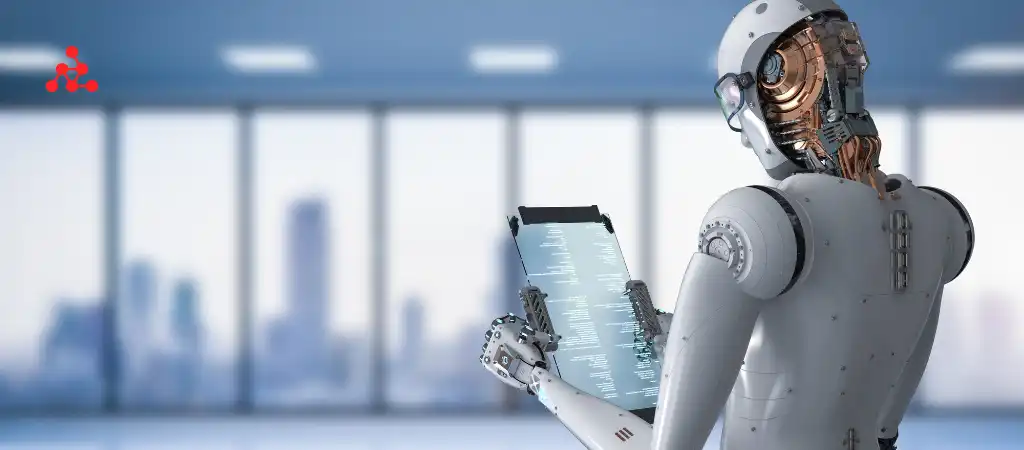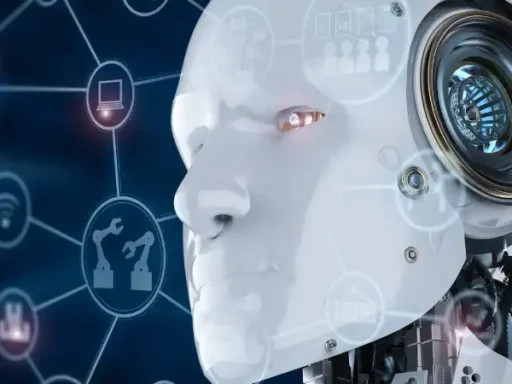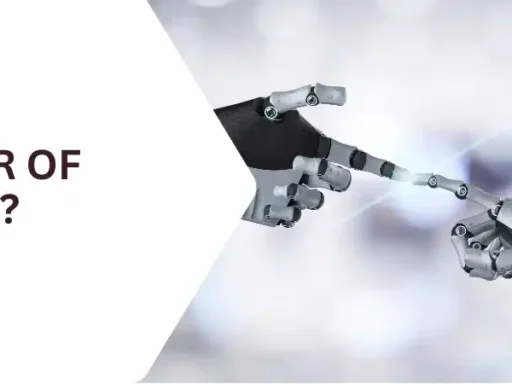Imagine a world where mundane tasks are handled with seamless efficiency, freeing up your time to focus on what truly matters. Welcome to the future, where robots are not just a concept of science fiction, but an integral part of daily life. You might ask yourself, What can the robot do? In short—far more than you think.
With robotics advancing at a rapid pace, the possibilities seem endless. From automated vacuum cleaners to humanoid companions, the influence of robotics in both industry and personal spaces has become undeniable.
So, let’s explore the wide array of tasks, functions, and services that these mechanical marvels can offer.
The Rise of Intelligent Machines
Robots are no longer clunky, limited machines bolted to factory floors. Today, they come in various forms, from industrial robots that build our cars, to social robots that help care for the elderly. Their rise isn’t just about mechanical efficiency, but about fostering an environment where humans and robots work in harmony. So, what exactly can the robot do?
The Evolution of Robotics
To understand the current capabilities, it helps to take a brief look at the evolution of robotics. In the 1960s, the first programmable robots were introduced in the manufacturing industry. They were large, static machines designed to perform repetitive tasks. Fast forward to today, and robotics has transformed into a highly sophisticated field with capabilities that mimic human cognition and even surpass it in certain areas.
But what can the robot do in this day and age? Let’s dive into the vast array of tasks that modern robots are capable of performing.
What Can the Robot Do in Industry?
Revolutionizing Manufacturing
Robots have become the backbone of modern manufacturing, driving unprecedented levels of efficiency and precision. For decades, robots have been performing repetitive tasks such as assembling products, welding, and painting, but today’s industrial robots are capable of far more complex operations.
Automation at Its Best
When you think of what a robot can do, industrial automation likely comes to mind first.
Robots today handle tasks like:
-
Assembly
From tiny electronics to large vehicles, robots assemble components with microscopic precision.
-
Welding and Painting
Tasks that require a steady hand and high precision are easily handled by robots. These processes are not only faster but also safer, as they can handle toxic materials and extreme environments.
-
Quality Control
Robots equipped with high-resolution cameras and sensors can detect even the slightest defects that a human eye might miss, ensuring the highest level of quality in manufactured products.
Improving Productivity and Safety
One of the greatest advantages of using robots in industrial settings is the significant increase in productivity and safety. They work tirelessly, without breaks, fatigue, or the risk of injury from repetitive motion. Additionally, robots can operate in dangerous environments, such as extreme heat, toxic atmospheres, or in proximity to hazardous machinery.
They’ve become indispensable in industries like:
-
Mining
Robots are used for drilling, sample collection, and even autonomous transportation of materials, reducing the need for human workers in high-risk areas.
-
Oil and Gas
With their ability to work in extreme weather conditions and handle dangerous chemicals, robots have become essential in exploration, extraction, and pipeline inspection.
Collaborative Robots (Cobots)
Cobots are a new class of robots designed to work alongside humans. They’re smaller, more flexible, and can easily adapt to various tasks. Unlike their industrial predecessors, cobots don’t need to be confined to cages for safety reasons. They can operate safely around humans, thanks to advanced sensors and AI-driven decision-making capabilities.
In a factory setting, for example, a cobot might assist a worker by holding parts steady while the worker fastens them, or by performing quality checks while the worker handles more complex tasks.
What Can the Robot Do in Healthcare?
Revolutionizing Medical Care
Robots have become indispensable in the medical field. From surgical precision to patient care, healthcare robots have transformed how doctors, nurses, and patients interact. Here’s what a robot can do in healthcare:
Surgical Robots
One of the most impressive applications of robot technology in medicine is in the operating room. Robots like the da Vinci Surgical System allow surgeons to perform minimally invasive surgeries with unparalleled precision. These robots are equipped with tiny instruments that can move in ways human hands cannot, allowing for smaller incisions, faster recovery times, and less risk of infection.
Surgeons operate these robots remotely, controlling their movements with extreme precision. For instance, a robot might assist in heart surgery by stitching up a delicate area without the need for a large incision.
Rehabilitation and Therapy
Physical therapy robots help patients recover from injuries and regain mobility. These robots are equipped with sensors and AI that adapt exercises to the patient’s progress, ensuring personalized and effective rehabilitation. Some can even provide real-time feedback to both the therapist and patient, making the recovery process faster and more engaging.
For example, exoskeleton robots assist paralyzed patients by allowing them to walk again. These devices support the patient’s body and use robotic motors to mimic natural walking patterns, giving them the mobility they otherwise wouldn’t have.
Healthcare Assistance
In hospitals, robots are assisting in non-surgical roles, such as delivering medications, transporting medical supplies, and even interacting with patients. In some facilities, robotic assistants perform routine checks, such as taking vital signs or even administering injections under a nurse’s supervision.
Elderly and Disability Care
One growing area of robotic assistance is elderly and disability care. Social robots like “Pepper” are being used to offer companionship and even perform some basic caregiving tasks, such as fetching items, reminding patients to take medication, and monitoring their well-being.
These robots can also provide emotional support. Their AI is designed to recognize emotions and respond appropriately, offering comfort and conversation to those who might be lonely or suffering from conditions like dementia. With the aging population increasing globally, the demand for robotic caregiving solutions is set to rise dramatically in the coming years.
What Can the Robot Do in the Home?
Domestic Robots – Bringing Automation to Your Doorstep
For years, we’ve been promised robots that would take over household chores, and while we’re not quite living with humanoid butlers just yet, domestic robots have made impressive strides. Let’s explore what robots can do in the home:
Smart Cleaning
One of the most common household robots today is the robot vacuum cleaner, like the Roomba. These little machines move autonomously around your home, vacuuming or mopping floors with surprising efficiency. They navigate furniture, avoid obstacles, and can even return to their charging station when their battery is low.
Robotic Kitchen Helpers
Imagine a robot that can cook your dinner. This is becoming a reality with the development of robotic kitchen assistants. These robots can perform various tasks like chopping vegetables, stirring pots, and even baking. Some advanced kitchen robots are capable of learning your favorite recipes and preparing meals exactly to your liking.
Home Security
Robots are also being used in home security systems. Equipped with cameras, sensors, and alarms, these robots patrol your home, alerting you to any suspicious activity. Some can even notify authorities if they detect a break-in, providing peace of mind whether you’re at home or away.
What Can the Robot Do in Space Exploration?
Pushing the Frontiers of Exploration
Space exploration is a field where robots truly excel. From exploring distant planets to conducting repairs on spacecraft, space robots are indispensable to the progress of humanity’s journey into the cosmos.
Mars Rovers
NASA’s Mars Rovers, such as Curiosity and Perseverance, have been instrumental in exploring the surface of Mars. These autonomous robots are equipped with cameras, sensors, and various scientific instruments that allow them to navigate the Martian terrain, collect samples, and send data back to Earth.
These robots can operate in extreme conditions, where human astronauts would not be able to survive, making them the perfect pioneers for space exploration. With future missions planned for moons of Jupiter and Saturn, robots will continue to be at the forefront of space discovery.
Space Station Repairs
Robots are also used to maintain and repair spacecraft and satellites. Robotic arms on the International Space Station (ISS) have been used for a variety of tasks, including repairs, maintenance, and the deployment of satellites. These robots can perform delicate tasks in the vacuum of space, where human intervention would be difficult and dangerous.
What Can the Robot Do in Education?
Enhancing Learning with Robotics
Robots are playing an increasingly important role in education, both as tools for teaching and as subjects of study. Here’s what robots can do to transform learning environments:
Teaching Assistants
Robots like NAO and Pepper are being used as teaching assistants in classrooms around the world. They can interact with students, provide lessons, and even help explain complex subjects like math and science. These robots are designed to engage students, making learning more interactive and fun.
Coding and Robotics Education
With the growing demand for STEM (Science, Technology, Engineering, and Mathematics) education, robots are being used to teach students how to code and build robotic systems. Educational kits like LEGO Mindstorms allow students to build and program their own robots, giving them hands-on experience with robotics and engineering principles.
Why Should You Care About What Robots Can Do?
The robot revolution is here, and it’s not just limited to factories and laboratories. Whether you’re interested in healthcare, space exploration, or simply want a robot to help with household chores, understanding what robots can do is crucial for staying ahead in today’s fast-evolving world.
From improving productivity and safety in industrial settings, to transforming healthcare and assisting in daily life, robots are poised to revolutionize the way we live and work. The future of robotics promises even greater advancements, with AI-driven robots that can think, learn, and adapt to new challenges.
Embrace the Robot Future
So, now that you know what robots can do, the next step is to embrace the possibilities. Whether you’re a business owner looking to increase productivity, a healthcare professional seeking advanced medical solutions, or simply a homeowner who wants to enjoy more leisure time, there’s a robot out there ready to assist you.
Take the first step by exploring the world of robotics and discovering how these incredible machines can benefit your life. The future is full of potential, and robots are leading the charge toward a smarter, more efficient world.
You Might Be Interested In
- How Much Power Does A Robot Vacuum Use?
- What Are Humanoid Robots Used For?
- How Have Robots Changed The Way We Work?
- How Can Robots Help Humans?
- How Many Ai Robots Are There?
Conclusion
In conclusion, the question, What can the robot do? no longer has a simple answer. Robots today are multi-functional, highly adaptive machines that have the power to revolutionize industries, enhance healthcare, make household chores easier, and even help us explore distant planets. With the continuous advancements in AI and robotics, the capabilities of robots will only expand, making them an even more integral part of our everyday lives. As we move forward, the possibilities of what robots can achieve seem limitless.
FAQs about What can the robot do?
What can a simple robot do?
A simple robot is typically designed to perform basic tasks that are repetitive or require minimal human intervention. These tasks can include movements like walking, picking up objects, or following a programmed path. Simple robots, like those used in educational settings, often focus on basic functionalities such as sensing their environment through light or sound sensors, moving in specific directions, or interacting with objects.
For instance, a basic robot might be programmed to follow a line on the ground, avoid obstacles, or react to simple commands like turning on a light.
Despite their simplicity, these robots serve as an important foundation for understanding robotics and automation. Their straightforward design makes them excellent learning tools for beginners, and they provide a glimpse into the potential of more advanced robots. Over time, more sophisticated robots build on these basic principles, adding layers of complexity through better sensors, mobility, and processing power.
What is a robot and what does it do?
A robot is a machine that is designed to carry out tasks automatically, either through pre-programming or by responding to inputs from its environment. Robots can vary widely in their complexity and functionality, ranging from simple machines that perform repetitive tasks to highly sophisticated systems capable of learning, adapting, and making decisions. What distinguishes a robot from other machines is its ability to be programmed to complete tasks with minimal human intervention, often performing tasks that are too dangerous, tedious, or complex for humans.
Robots are used in many fields, including manufacturing, healthcare, education, and even household chores. In industrial settings, robots can assemble products, weld components, and carry out precise, repetitive operations. In healthcare, robots assist in surgeries, provide rehabilitation support, and perform tasks that require high precision. Essentially, robots do tasks that enhance human productivity, safety, and convenience.
What can robots do right now?
Currently, robots are capable of performing a wide range of tasks across various industries and settings. In factories, they handle assembly lines, welding, painting, and quality control with incredible speed and precision. Robots are also used in healthcare, where they assist in surgeries, perform diagnostics, and help with rehabilitation.
Social robots can interact with humans, offering companionship, care for the elderly, and even basic conversation. In homes, robots like vacuum cleaners, lawn mowers, and robotic kitchen assistants are increasingly taking over routine chores.
Beyond these everyday uses, robots are also used in more specialized fields like space exploration, agriculture, and defense. Mars rovers, for instance, explore the surface of distant planets, while drones and autonomous vehicles perform tasks like surveying land or delivering goods.
With advancements in artificial intelligence and machine learning, robots are becoming smarter, allowing them to not only follow pre-programmed instructions but also learn and adapt to new environments and challenges.
What are the three things robots do?
Robots generally excel in three primary areas: automation, precision, and interaction. First, robots are designed to automate tasks that are repetitive, labor-intensive, or require consistent output. This makes them ideal for environments like manufacturing, where robots can work tirelessly without the need for breaks, thus increasing efficiency and reducing human error. Automation allows for the completion of tasks at a faster rate and often at a lower cost.
Second, robots perform tasks with a level of precision that humans may find difficult to achieve consistently. Whether it’s assembling tiny components in electronics manufacturing or performing delicate surgical procedures, robots can work with pinpoint accuracy.
Finally, robots interact with their environment and, in some cases, with humans. Robots equipped with sensors and AI can respond to changes in their surroundings, adapt their behaviors, and in social contexts, even communicate with people, helping to enhance daily life and professional workflows.
What can my robot do?
The capabilities of your robot depend largely on its design and purpose. If your robot is a household device, like a robotic vacuum or kitchen assistant, it can help automate routine chores such as cleaning floors, cooking meals, or even managing your home’s security.
These robots often come equipped with sensors and programming that allow them to navigate spaces, avoid obstacles, and perform tasks efficiently without constant supervision. If it’s a more advanced model, your robot might be able to interact with smart home systems, providing an even higher level of automation.
For hobbyists and educational robots, the tasks may be more focused on learning and development. These robots can teach programming, engage in problem-solving activities, or even participate in games. The versatility of modern robots means they can be programmed to do a wide range of tasks, and with upgrades, your robot might even learn new tricks over time.







